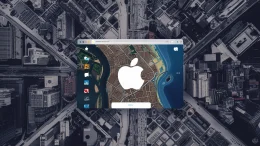
We have seen the tech wars developing on different hardware platforms between the various operating systems but Android and ChromeOS have been snuggled up with nVidia as their exclusive playing ground. Due to closed sourced video drivers video hardware acceleration was a major obstacle for anyone to overcome. Well that was yesterday and today is today and that obstacle is no more.
nVidia have now released a set of video drivers enabling MeeGo ports to run unhindered on the numerous Tegra 2 tablets out there such as the Advent Vega, Adam, Asus Transformer, Motorola Xoom and also the new range of Tegra 2 handsets just being released like the LG Optimus 2x. This is no longer an exclusively Android area but somewhere we see MeeGo dominating in the coming months / years. Why Dominate ? MeeGo is an Open Source Operating System with many keen developers eager to develop for hardware that may be unsupported by Google Android in the near future.

This story began with vgrade getting sent a set of hardfp video drivers built for the Tegra 2 chip via compulab inside their trimslice product. These drivers are now available to registered trimslice developers signed up on their devslice forum. This has enabled him to get accelerated graphics on his MeeGo port to the device. This is a perfect device for putting below your TV and with the up coming MeeGo for TV UX we will be able to experience MeeGo in the large. For access to the drivers developers need to got to the trimslice Forum and PM irads to ask for acces to the private devslice forum.
Video of the action:
The trimslice is a fanless dual core computer which is only 0.6 inches thick sporting HDMI, DVI , 4 USB, serial connection, front mounted SD card slot and side mounted microsd slot. The MeeGo build running here is a fairly recent Tablet UX build usually only seen on Intel Pinetrail devices.
Full Specifications of trimslice
| CPU | NVIDIA Tegra 2 @ 1 GHz |
| Memory | 1 GB DDR2-667 |
| Storage | 32 GB SATA SSD (1.8″ half size, USB to SATA Genesys Logic GL830) Full size SD slot (SDHC) Micro SD slot (SDHC) with locking door |
| Primary display | HDMI 1.3 max resolution 1920 x 1080 |
| Secondary display | DVI-D max resolution 1680 x 1050 with DDC (Silicon Image Sil164) |
| Audio | S/PDIF 5.1 (electrical through 3.5mm jack) Stereo line-out, Sereo line-in (TI TLV320AIC23) |
| LAN | Gigabit Ethernet (Realtek RTL8111DL) |
| WLAN | 802.11n single antenna (RaLink RT3070) |
| USB | 4 USB 2.0 standard A type – max current 1A per port |
| USB Device | Micro USB device port (mutually exclusive with SATA functionality) |
| Serial port | RS232 full UART (MAX3243) |
| Security | Kensington lock |
| Dimensions | 130mm x 95mm x 15mm 5.1″ x 3.7″ x 0.6″ |
| Case | All metal, silver color |
| Input | 12V DC (8V – 16V tolerant) |
| Power | 2W – 6W (depending on system load) |
| Operating Temperature | 0C – 45C |

Heres the Tech bit:
The significance of the hardfp drivers is an important change to the binary interfaces between functions on ARM processors. Before hardfp function parameters were converted from floats into integers before being passed to a function and converted back to floats by the called function. This wastes a lot of time especially in processor intensive things like sound and video. MeeGo made the jump to a hardfp build late last year but Fedora, Debian, Arch and Ubuntu are also planning releases. MeeGo was one of if not the first to move and has suffered a little because the OEM’s had not released hardfp versions of their drivers. Up until now that is. MeeGo is again at the forefront of Linux based experiences.
Vgrade has also been talking to irads at trimslice about starting a Device Developer Program for devices where compulabs make development devices available at a reduce price for MeeGo developers.
Message from vgrade: “Finally can I express my thanks to the team at compulabs (irads) and the devs at nVidia for listening and providing the drivers to make this possible.”

















